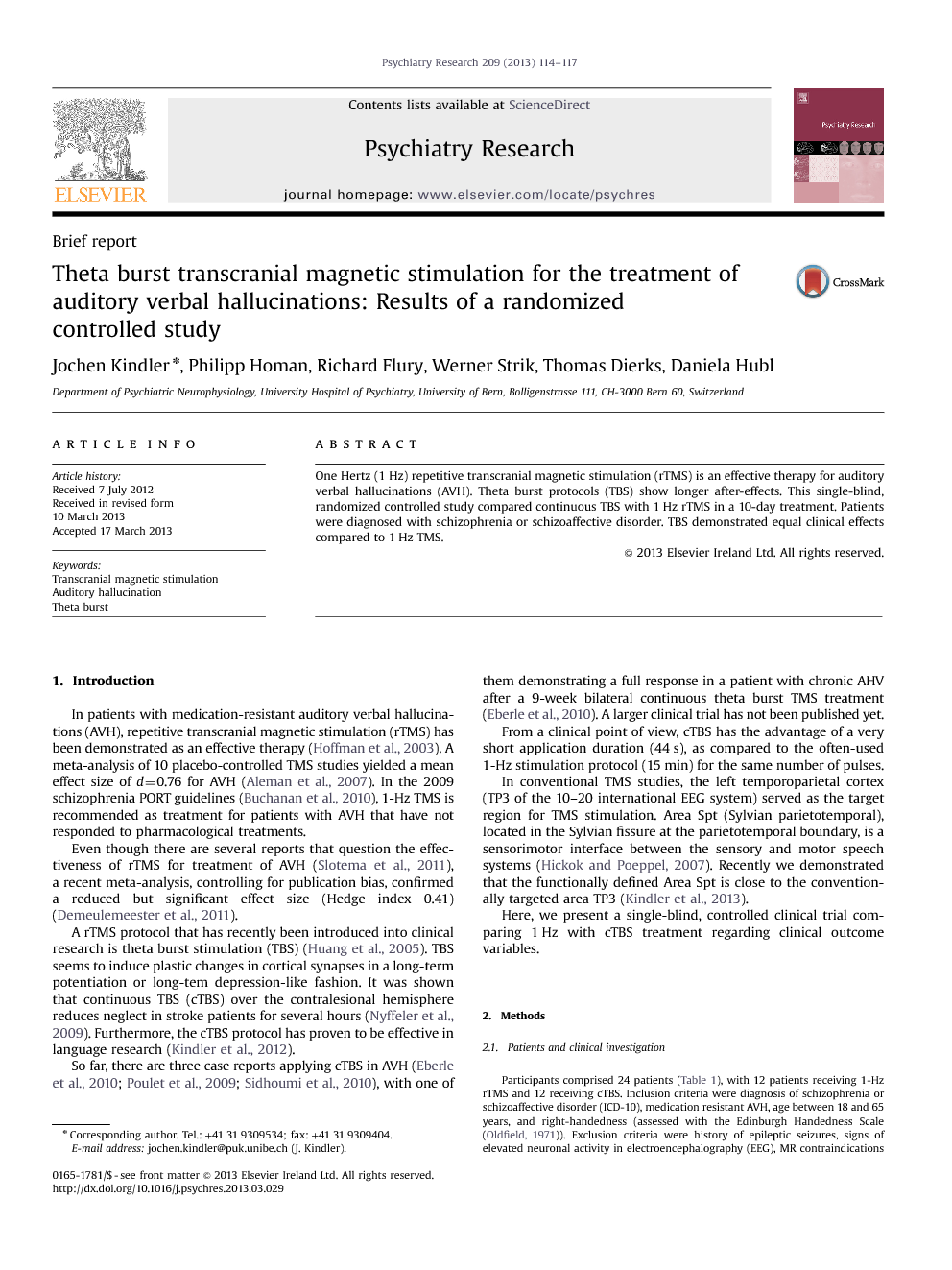One Hertz (1 Hz) repetitive transcranial magnetic stimulation (rTMS) is an effective therapy for auditory verbal hallucinations (AVH). Theta burst protocols (TBS) show longer after-effects. This single-blind, randomized controlled study compared continuous TBS with 1 Hz rTMS in a 10-day treatment. Patients were diagnosed with schizophrenia or schizoaffective disorder. TBS demonstrated equal clinical effects compared to 1 Hz TMS.
In patients with medication-resistant auditory verbal hallucinations (AVH), repetitive transcranial magnetic stimulation (rTMS) has been demonstrated as an effective therapy (Hoffman et al., 2003). A meta-analysis of 10 placebo-controlled TMS studies yielded a mean effect size of d=0.76 for AVH ( Aleman et al., 2007). In the 2009 schizophrenia PORT guidelines ( Buchanan et al., 2010), 1-Hz TMS is recommended as treatment for patients with AVH that have not responded to pharmacological treatments.
Even though there are several reports that question the effectiveness of rTMS for treatment of AVH (Slotema et al., 2011), a recent meta-analysis, controlling for publication bias, confirmed a reduced but significant effect size (Hedge index 0.41) (Demeulemeester et al., 2011).
A rTMS protocol that has recently been introduced into clinical research is theta burst stimulation (TBS) (Huang et al., 2005). TBS seems to induce plastic changes in cortical synapses in a long-term potentiation or long-tem depression-like fashion. It was shown that continuous TBS (cTBS) over the contralesional hemisphere reduces neglect in stroke patients for several hours (Nyffeler et al., 2009). Furthermore, the cTBS protocol has proven to be effective in language research (Kindler et al., 2012).
So far, there are three case reports applying cTBS in AVH (Eberle et al., 2010, Poulet et al., 2009 and Sidhoumi et al., 2010), with one of them demonstrating a full response in a patient with chronic AHV after a 9-week bilateral continuous theta burst TMS treatment (Eberle et al., 2010). A larger clinical trial has not been published yet.
From a clinical point of view, cTBS has the advantage of a very short application duration (44 s), as compared to the often-used 1-Hz stimulation protocol (15 min) for the same number of pulses.
In conventional TMS studies, the left temporoparietal cortex (TP3 of the 10–20 international EEG system) served as the target region for TMS stimulation. Area Spt (Sylvian parietotemporal), located in the Sylvian fissure at the parietotemporal boundary, is a sensorimotor interface between the sensory and motor speech systems (Hickok and Poeppel, 2007). Recently we demonstrated that the functionally defined Area Spt is close to the conventionally targeted area TP3 (Kindler et al., 2013).
Here, we present a single-blind, controlled clinical trial comparing 1 Hz with cTBS treatment regarding clinical outcome variables.


